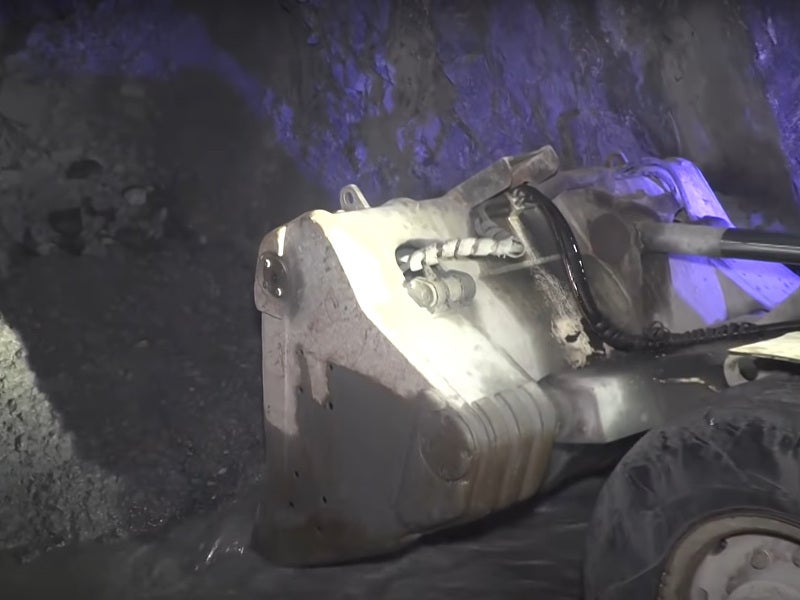
Blanket gold mine is located in Zimbabwe. Credit: Caledonia Mining.

The Blanket mine produced approximately 55,000oz of gold in 2019. Credit: Caledonia Mining.

Blanket gold mine was acquired by Caledonia Mining in 2006. Credit: Caledonia Mining.
The Blanket gold mine is an underground gold mine located in Zimbabwe. Operated by Caledonia Mining, the mine is jointly owned by Caledonia (64%) and Zimbabwean shareholders (36%).
The Blanket mine began production in 1904 and was acquired by Caledonia Mining from Kinross Gold in 2006. It currently produces approximately 1,200t of ore a day.
Blanket’s mining operations are located at a depth of 750m and its mining area includes eight producing ore shoots.
Caledonia announced a revised investment plan for the project in 2014 to increase gold production to 80,000oz by 2022. The company plans to invest $70m in the mine through internal cash generation and existing cash resources.
The Blanket mine produced approximately 55,000oz of gold in 2019.
Blanket gold mine location, geology and mineralisation
The Blanket gold mine is located approximately 15km west of Gwanda in south-west Zimbabwe.
Gwanda is situated at a distance of 150km from the city of Bulawayo and 196km away from Beit Bridge border post with South Africa.
The mine is accessible via an all-weather tarred road from Gwanda, ensuring easy access from Beit Bridge, Bulawayo and Harare by a national highway.
It is situated in the Gwanda Greenstone Belt which stretches 80km in an east-west direction. The belt primarily contains basaltic rocks with minor felsic and ultramafic units.
Gold mineralisation at the location occurred due to the reaction of rising hot fluids with the iron-rich minerals of the shear zones. The reaction of sulphur in solution with iron in the rocks resulted in the formation of predominantly arsenopyrite sulphide minerals. The gold ore at the deposit was formed by the unification of gold carrying fluids with the arsenopyrite.
Blanket gold mine reserves
The mine is estimated to contain proven and probable reserves of 3.97 million tonnes (Mt) of ore at a grade of 3.73g/t of gold (Au), as of August 2017. The contained gold is estimated to be 476,763oz.
The estimated production from proven and probable mineral reserves is expected to be approximately 6,000oz in 2021.
The revised investment plan is expected to increase production from inferred resources to approximately 75,000oz in 2021.
Mining method at Blanket gold mine
The primary mining methods employed by the Blanket mine are underhand stoping in the narrow ore bodies and long-hole stoping in the wider ore bodies.
Jackhammers, drifters and loaders are used for underground lashing and drilling.
Broken ore from the mine is transported to one of three grizzlies above the ore bins located between 22 level and the 765m level crushing station by battery locomotives and the ore cars trains.
The three underground storage bins hold -300mm rocks, while payable and waste ores are held in separate storage bins. The ore is gravity fed from the ore bins to the 765m level crushing station conveyor releasing the ore onto a vibrating grizzly feeder, which transfers it into a 30×20 Telsmith jaw crusher.
Surface and underground operations at the mine, excluding the Lima Shaft, can be powered by the 10,000kVA standby diesel-powered generating sets.
Processing at Blanket gold mine
The processing plant at the Blanket gold mine contains crushing, milling, carbon-in-leach (CIL) and batch elution electro-winning circuits.
Run of mine (ROM) ore is crushed underground to -80mm and then lifted to the surface and crushed to -12mm in the surface-based two-stage crushing circuit.
The crushed material is then milled in two 1.8m x 3.6m rod mills, following which the milled ore is pumped through two 30in Knelson Gravity Concentrators to recover approximately 49% of total gold production. The concentrator tails are pumped through cyclones and underflow is transferred to open-circuit regrind ball mill.
The recovered concentrate is stored and re-concentrated on a Gemini table, before undergoing direct smelting.
The output from the cyclone overflow and the regrind mill discharge is pumped into a carbon-in-leach (CIL) plant. It undergoes alkaline cyanide leaching and the dissolved gold is simultaneously absorbed by granular activated carbon.
The gold from the loaded carbon undergoes elution, electro-winning and smelting processes to form bars.
Infrastructure of Blanket gold mine
The major infrastructure of the mine includes a process plant, workshops and a tailings dam.
The administration facilities include offices, stores, workshops and a laboratory located adjacent to the mine shafts with additional space for expansion.
Water for the site and the mining village is sourced from the Blanket Dam. The mine also has boreholes to provide water during periods of drought. It purchases processed and domestic water from the Zimbabwe National Water Authority.
The mine receives electricity from the Zimbabwe Electricity Transmission and Distribution through its main substation in Gwanda. It is connected to the national grid by two power lines of 11kVA and 33kVA.
The Blanket gold mine has a current power allocation of 10MVA. It also features a 10MVA generator for its own usage to address frequent power supply interruptions.



